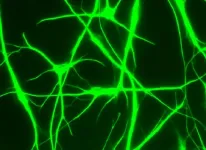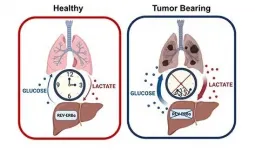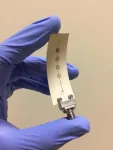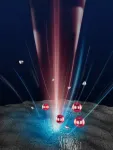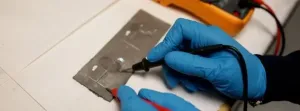(Press-News.org) Just as humans have their own individual personalities, new research in the Journal of Comparative Psychology shows that elephants have personalities, too. Moreover, an elephant's personality may play an important role in how well that elephant can solve novel problems.
The article was written by Lisa Barrett and Sarah Benson-Amram in the University of Wyoming's Animal Behavior and Cognition Lab, led by Benson-Amram. It may be viewed here.
The authors of the paper tested 15 Asian elephants and three African savanna elephants in three zoos across the country -- the San Diego Zoo, the Smithsonian's National Zoological Park and the Oklahoma City Zoo -- with the help of elephant caretakers.
Previous work from Barrett and Benson-Amram demonstrated that Asian elephants can use water as a tool to solve a novel problem -- and reach a tasty marshmallow reward -- in what's called the floating object task. This time, the authors designed new novel tasks, as well as personality tests, for the elephants.
"We took a comprehensive approach by using three different problem-solving tasks and three types of personality assessments to determine if individual personality played a role in which elephants were able to solve these tasks," Barrett says. "Since we couldn't give the elephants a personality test like the ones you're familiar with online, we had to think creatively."
The authors developed novel object tests, in which they presented the elephants with an unfamiliar object, a mylar balloon, a burned log and the scent of a predator (lion or hyena), and recorded the elephants' responses. You can watch videos of the novel object trials: balloon, burned log and urine. They also asked elephant caretakers to fill out a survey about the personalities of the animals in their care; and, finally, they observed the elephants interacting with one another in their zoo habitats.
From those assessments, Barrett and Benson-Amram learned that the surveys and observations were the most reliable methods to get at elephant personality. Overall, Barrett and Benson-Amram measured traits such as active, affectionate, aggressive, defiant, excitable, mischievous, shy and sociable, which have been studied in other animals as well.
"We were eager to see if the personality traits we uncovered through the surveys and observations predicted success on novel problem-solving tasks," Benson-Amram says. "The elephants had an opportunity to solve each task three times, and we measured if they learned to solve faster over time, and then we traced their success back to their personality type."
The three problem-solving tasks included the trap tube task, which is a common test used with primates but which had never been presented outside of primates before. You can watch videos of the problem-solving trials: boxed ball, rod ball and trap tube.
Barrett and Benson-Amram found that elephants did learn to solve two out of the three tasks faster over time, even though the elephants only received three trials on each task. Traits including aggressiveness and activity were important predictors of problem-solving overall, but the personality traits measured did not significantly predict learning ability.
This study makes connections between two sources of individual variation, personality and cognition, in threatened species. One reason it is important to examine problem-solving in elephants is that they are faced with new problems that they need to solve regularly in the wild. For example, if certain traits enable elephants to overcome novel problems, elephants may be more likely to invade farmland and contribute to human-elephant conflict. With more research, managers can predict which elephants might overcome or habituate to deterrents, and managers can devote more resources to tracking elephants.
The authors call for more work on different forms of personality assessments to determine which methods would be best for management of zoo and wild elephants.
"Research with free-ranging elephants can extend this study to determine which personality traits are most important for solving novel problems that elephants experience in the wild," says Barrett, a 2020 graduate of UW's Program in Ecology and the Department of Zoology and Physiology.
INFORMATION:
FINDINGS
A UCLA-led study comparing brain cells known as astrocytes in humans and mice found that mouse astrocytes are more resilient to oxidative stress, a damaging imbalance that is a mechanism behind many neurological disorders. A lack of oxygen triggers molecular repair mechanisms in these mouse astrocytes but not in human astrocytes. In contrast, inflammation activates immune-response genes in human astrocytes but not mouse astrocytes.
BACKGROUND
Although the mouse is a ubiquitous laboratory model used in research for neurological diseases, results from studies in mice are not always applicable to humans. In fact, more than 90% of drug candidates that show preclinical promise for neurological disorders ultimately fail when tested in humans, in part ...
Crude oil production and natural gas withdrawals in the United States have lessened the country's dependence on foreign oil and provided financial relief to U.S. consumers, but have also raised longstanding concerns about environmental damage, such as groundwater contamination.
A researcher in Syracuse University's College of Arts and Sciences, and a team of scientists from Penn State, have developed a new machine learning technique to holistically assess water quality data in order to detect groundwater samples likely impacted by recent methane leakage during oil and gas production. Using that model, the team concluded that unconventional drilling ...
Irvine, CA - June 25, 2021 - New research from the University of California, Irvine reveals how the circadian regulation of glucose production in the liver is lost during lung cancer progression, and how the resulting increase in glucose production may fuel cancer cell growth.
The new study titled, "Glucagon regulates the stability of REV-ERBα to modulate hepatic glucose production in a model of lung cancer-associated cachexia," published today in Science Advances, illustrates how the circadian clock is regulated under conditions of stress such as during lung cancer progression and cancer-associated tissue wasting ...
After suffering a stroke, patients often are unable to use the arm on their affected side. Sometimes, they end up holding it close to their body, with the elbow flexed.
In a new study, Northwestern University and Shirley Ryan AbilityLab researchers have discovered that, in an attempt to adapt to this impairment, muscles actually lose sarcomeres -- their smallest, most basic building blocks.
Stacked end to end (in series) and side to side (in parallel), sarcomeres make up the length and width of muscle fibers. By imaging biceps muscles with three noninvasive methods, the researchers found that stroke patients had fewer sarcomeres along the length ...
ROCHESTER, Minn. -- Researchers at Mayo Clinic Cancer Center are studying a potential new chimeric antigen receptor-T cell therapy (CAR-T cell therapy) treatment for multiple myeloma. Their findings were published on Friday, June 24, in The Lancet.
"CAR-T cell therapy is a type of immunotherapy that involves harnessing the power of a person's own immune system by engineering their T cells to recognize and destroy cancer cells," says Yi Lin, M.D., a Mayo Clinic hematologist and lead author of the study.
Dr. Lin says the Food and Drug Administration approved ...
The promise of 5G Internet of Things (IoT) networks requires more scalable and robust communication systems -- ones that deliver drastically higher data rates and lower power consumption per device.
Backscatter radios ? passive sensors that reflect rather than radiate energy ? are known for their low-cost, low-complexity, and battery-free operation, making them a potential key enabler of this future although they typically feature low data rates and their performance strongly depends on the surrounding environment.
Researchers at the Georgia Institute of Technology, Nokia Bell Labs, and Heriot-Watt University have found a low-cost way for backscatter radios to support high-throughput communication and 5G-speed Gb/sec data transfer using only a single transistor when previously ...
Three years ago, Arthur Ashkin won the Nobel Prize for inventing optical tweezers, which use light in the form of a high-powered laser beam to capture and manipulate particles. Despite being created decades ago, optical tweezers still lead to major breakthroughs and are widely used today to study biological systems.
However, optical tweezers do have flaws. The prolonged interaction with the laser beam can alter molecules and particles or damage them with excessive heat.
Researchers at The University of Texas at Austin have created a new version of optical tweezer technology that fixes this problem, a development ...
Want a smartphone that stretches, takes damage, and still doesn't miss a call?
A team of Virginia Tech researchers from the Department of Mechanical Engineering and the Macromolecules Innovation Institute has created a new type of soft electronics, paving the way for devices that are self-healing, reconfigurable, and recyclable. These skin-like circuits are soft and stretchy, sustain numerous damage events under load without losing electrical conductivity, and can be recycled to generate new circuits at the end of a product's life.
Led by Assistant Professor Michael Bartlett, the team recently published its findings in END ...
Scientists from the National University of Science and Technology "MISIS" (NUST MISIS) in cooperation with their colleagues from the Siberian Federal University and the Research and Production Centre of Magnetic Hydrodynamics (Krasnoyarsk) have developed a technology for producing a unique heat-resistant aluminium alloy with improved durability.
According to the researchers, this new alloy could replace more expensive and heavier copper conductors in aircraft and high-speed rail transport. The study results were published in an interdisciplinary, peer-reviewed journal, the Materials Letters. (https://www.sciencedirect.com/science/article/abs/pii/S0167577X2100896X)
Researchers have created a method for producing ...
Night and day, oil tankers, yachts and cargo ships stacked with shipping containers ply the 80-kilometer (50-mile) waterway through the jungles of Panama between the Atlantic and the Pacific Ocean: about 40 ships every 24 hours. But even though the Canal is fed by freshwater rivers that empty through the locks on each end, a system that generally prevents fish and smaller marine invertebrates from hopping from ocean to ocean, some still manage to get through, clinging to the hulls of ships. Other invading species arrive from far-flung ports, dumped with ballast water as ships prepare for transit.
"Panama is a major shipping hub that provides amazing opportunities to test key ideas about marine invasions by studying ...

